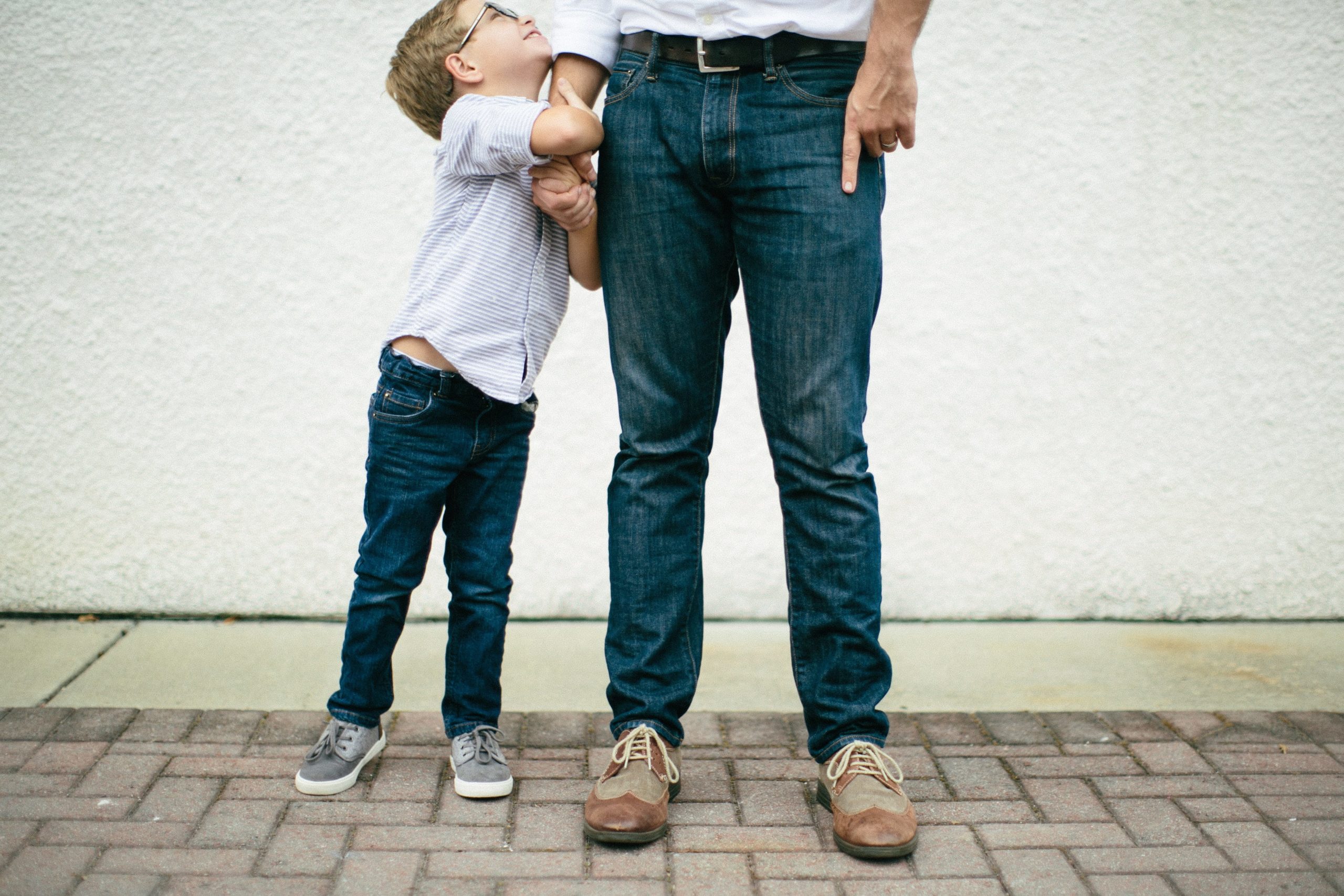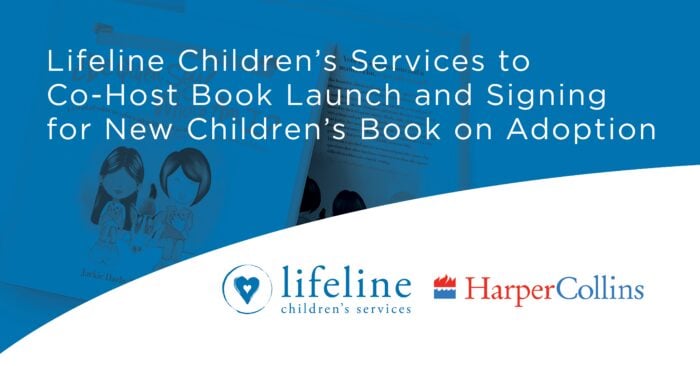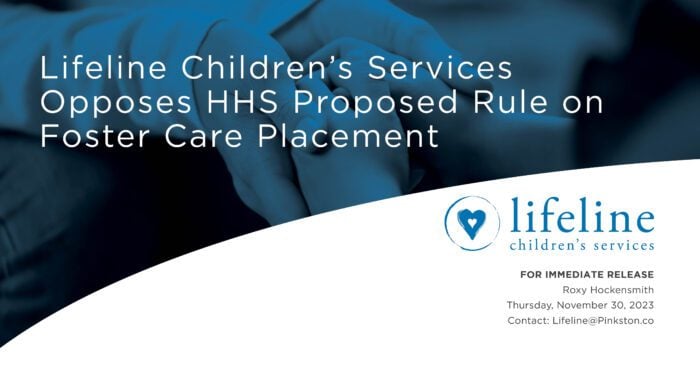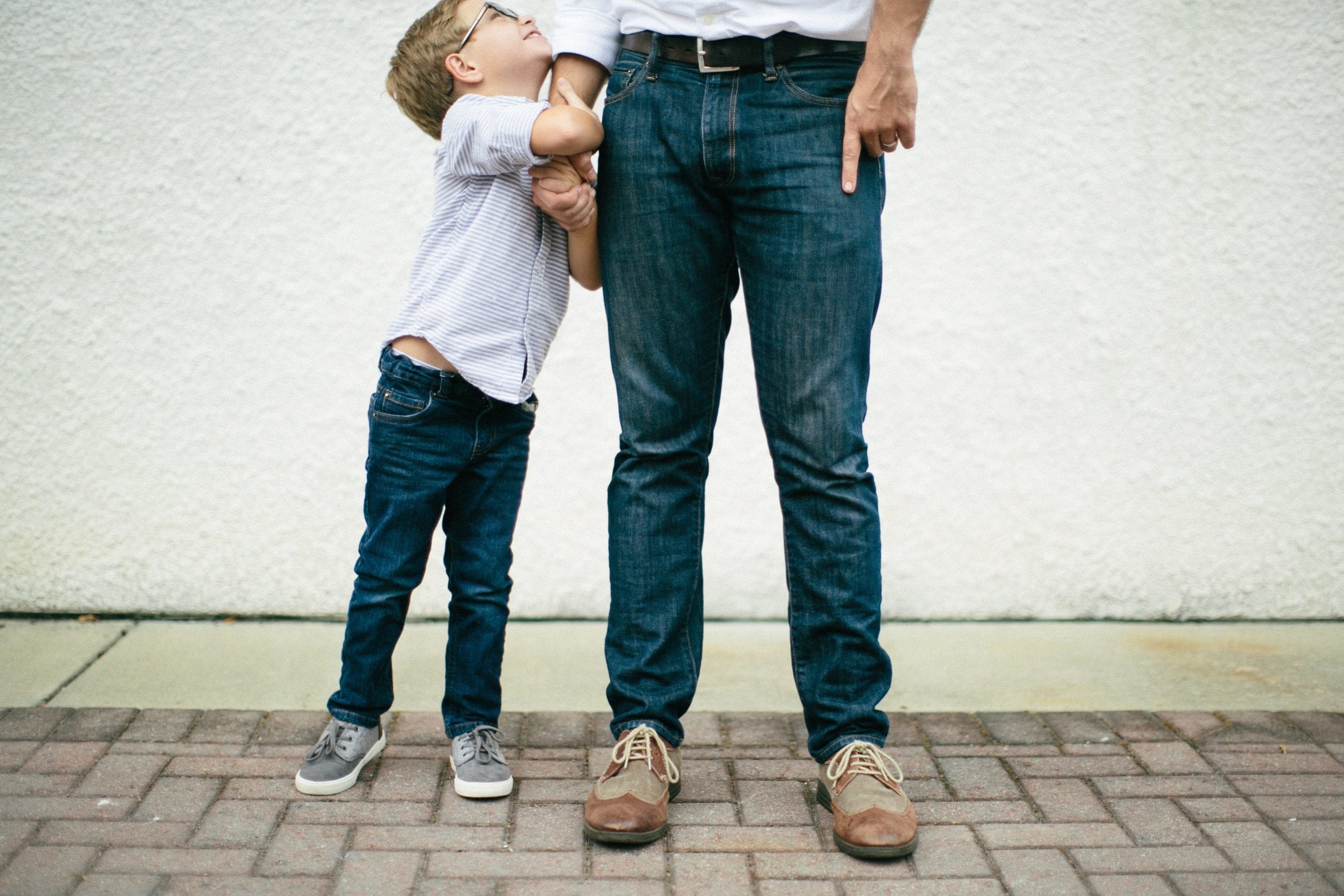

We have all seen it. We have all been there. We are at a social gathering, usually a pot luck dinner at church, when that cute and adorable toddler cozies up to a random leg and puts on the death grip. But it is the wrong leg. I mean who can see faces when your visual field is only 18-24 inches high? Not to mention, that most legs clothed in khaki or jeans look the same. And then, there is that moment, when the receiver of the grip looks down and the toddler looks up. The wails begin and the meltdown ensues. The moment when the toddler realizes they have attached themselves to the wrong leg! The wrong person! Their wails communicate, “You are not my dad!” and “Where is my dad?” Parents come running and the child is soothed. That child has just demonstrated discriminate affection. This is a child that is securely attached and is able to discriminate between their primary care giver and the stranger.
If we replace the secure child in the above scenario with a child from a hard place- with a compromised background, who is not securely attached- we may have a different response and outcome. It doesn’t matter to them if they have attached to the wrong leg. Really, just about any adult will do. They have learned that any adult can meet their need. This is a child with indiscriminate affection. This child might smile when they see the stranger’s face and lift their arms to be picked up. How adorable! The adult is flattered and gives the child all the attention they want, unwittingly reinforcing the child’s pattern of having their needs met in an inappropriate way.
Indiscriminate affection is when children approach and interact with strangers in the same way they do with their primary caregiver- not making a distinction between the two.
WHY INDISCRIMINATE AFFECTION OCCURS
This charming and friendly behavior is developed as a survival skill to win favor from their caregivers and to get their needs met. Children who have been deprived of attention and care may overcompensate when they have positive reactions from caring adults by seeking attention from every adult they encounter. Children who have experienced multiple caregivers or caregivers who have met their needs inconsistently have difficulty understanding and forming secure attachments. This is not God’s design for relationships. God’s design is for a child to attach to parents, their primary caregivers. When a child is not able to attach to a primary care giver, they do not have a healthy foundation or blue print for building attachments in future relationships. For the child with an insecure attachment, charming the stranger is so much easier than relating on a deeper level to a parent who is requiring more of the relationship. Children will take the path of least resistance and choose a superficial relationship over the work that it takes to develop the real, longer lasting relationship.
IMPACT OF INDISCRIMINATE AFFECTION
Indiscriminate affection may seem like a minor problem, but it needs to be taken seriously as it can impact several areas, for example it:
* Places child at risk for future abuse from child predators
* Compromises attachment with primary caregiver
* Compromises ability to attach appropriately in future relationships as an adult
* Places child at higher risk for psychological and behavioral problems
* Places child at risk for depression and aggression toward peers
HOW DO I KNOW IF MY CHILD HAS INDISCRIMINATE AFFECTION
Many adoptive and foster parents will comment that their child is so outgoing or is such a social butterfly. But there is a difference in a child who is friendly and a child displaying indiscriminate affection. Developmentally, children should be hitting markers showing an understanding of stranger awareness. Between the ages of 6-9 months most infants will show signs of distress when held by a stranger or when mother leaves the room. Toddlers should pull close to parents when approached by someone they do not know until parents signal this is a safe person. So how do you determine if a child is just outgoing and friendly or has indiscriminate affection? Be observant when your child is in social settings and note the following:
* Does your child readily seek physical touch and hugs from strangers?
* Does your child have difficulty understanding and respecting others’ personal space?
* Does your child climb into any lap that is available? Does your child seek out others to meet their physical needs?
* Do they ask anyone for a snack or help with their juice box?
* If your child is injured, do they easily accept comfort from someone other than you?
* While playing at the park, does your child ask whomever is available for a push on the swing?
* Does your child show no fear of strangers?
* Does your child seem overly interested in strangers and even seek them out?
If you answered yes to the majority of these questions, then you may have a child that needs help in understanding primary relationships and attaching securely. If your child does not return to you frequently to “touch base” and check in with you and does not acknowledge or recognize you as their primary caregiver to meet their physical, emotional, and social needs, then they may be exhibiting indiscriminate affection.
A child with a secure base of attachment will follow the cycle of looking back to check in with a parent before going further in exploration, play, and interaction with others. The securely attached child is relying on the parent to help them navigate the safety of their environment and to give them cues on social interactions. Some of the building blocks for attachment include touch, protection, and meeting needs. A child with a secure attachment is seeking out their parent to meet their needs in each of these areas.
HOW TO RESPOND
Indiscriminate affection is an indicator of a child’s struggle to attach and move into deeper relationships. Once identified, parents can work to strengthen their child’s ability to attach and to recognize the degrees of relationships within society. If a child is new to the home then a period of “cocooning” would be recommended so that parent and child can work on building their attachment to one another. This is a time of minimizing time away from home and limiting the number of interactions a child has with other adults. In other words, keeping a child close to you so that you can meet their needs. This gives a parent an opportunity to establish that role of primary care giver by meeting the child’s needs. Foster parents also play an important role in helping a child attach in a healthy way. This attachment can then radiate out to other important relationships in their life, such as birth parents. Daily activities of feeding, caring, nurturing, and playing can help build connection and attachment between child and parent.
Help your child develop a good sense of boundaries. Your child may not understand that there are different levels of intimacy in how we interact with others in a social setting. The Circles Program is a very helpful way to teach this concept. It utilizes colored circles to represent different levels of relationships. For example, we start with purple, which represents the child. The blue circle represents family. The green circle represents friendship, and on to the final red circle which represents the stranger. Within each circle there is discussion of the appropriate ways we interact with each group. Check it out at https://www.pinterest.com/kimrose1/circles-program/?lp=true .
Teach your child to ask your permission before they talk or touch others. Help your child understand their own personal space and the personal space of others by using hula hoops. As each person steps into the hula hoop they can see where their space begins and ends. Then you practice asking permission to enter another’s space. For example, “Can I give you a high five?” or “Can I give you a hug?”
Impulsiveness is one of the hardest behaviors to modify with regard to indiscriminate affection. A child sees a stranger in the store and immediately starts a conversation or runs to hug the stranger at the park. Use games that require some self-regulation or teach self-control, such as “red light/green light” or “mother may I?” This will help your child develop listening skills and control of their actions.
CONCLUSION
The good news is that children can learn to be securely attached and to recognize their parents as their primary caregiver. They can learn to distinguish the difference between close relationships and strangers. As you begin to meet your child’s needs and connect with them through play and daily activities, that attachment is going to begin to grow stronger. As you train them in understanding personal space and the levels of relationships you should see the indiscriminate affection diminish. However, if a child has been in your home for six months and there has not been a decrease in their indiscriminate affection then seek out a counselor who is trained in attachment and trauma. Through different techniques they can help you and your child build that important connection. When parents cultivate healthy and secure attachment relationships with their children, they in turn cultivate an “internal felt sense of safety and trust, and an emerging sense of the self.”1 This will create that important foundation that will last into the child’s future relationships with classmates, teachers, co-workers, spouses, and maybe one day their own children.
1 Weitzman, C., & Albers, L. (n.d.). Long-Term Developmental, Behavioral, and Attachment Outcomes After International Adoption. Pediatric Clinics of North America, 1395-1419. Page 1407
Office of Child Development. (n.d.). www.education.pitt.edu/ocd/publications/fosterparent. Retrieved from You and Your Foster Child: www.education.pitt.edu/ocd/publications/fosterparent
https://www.mljadoptions.com/blog/handle-adoptive-childs-indiscriminate-affection-20140902
E. (2012, June 2). Adoption 101: Indiscriminate affection. Retrieved from Ordinary Time Life at BitterSweet Farm: http://ordinary-time.blogspot.com/2012/06/adoption-101-indiscriminate-affection.html
simpson, a. (2014, Semptember 2). How to Handle your Child’s Indiscriminate Affection. Retrieved from MLJ Adoption: https://www.mljadoptions.com/blog/handle-adoptive-childs-indiscriminate-affection-20140902




